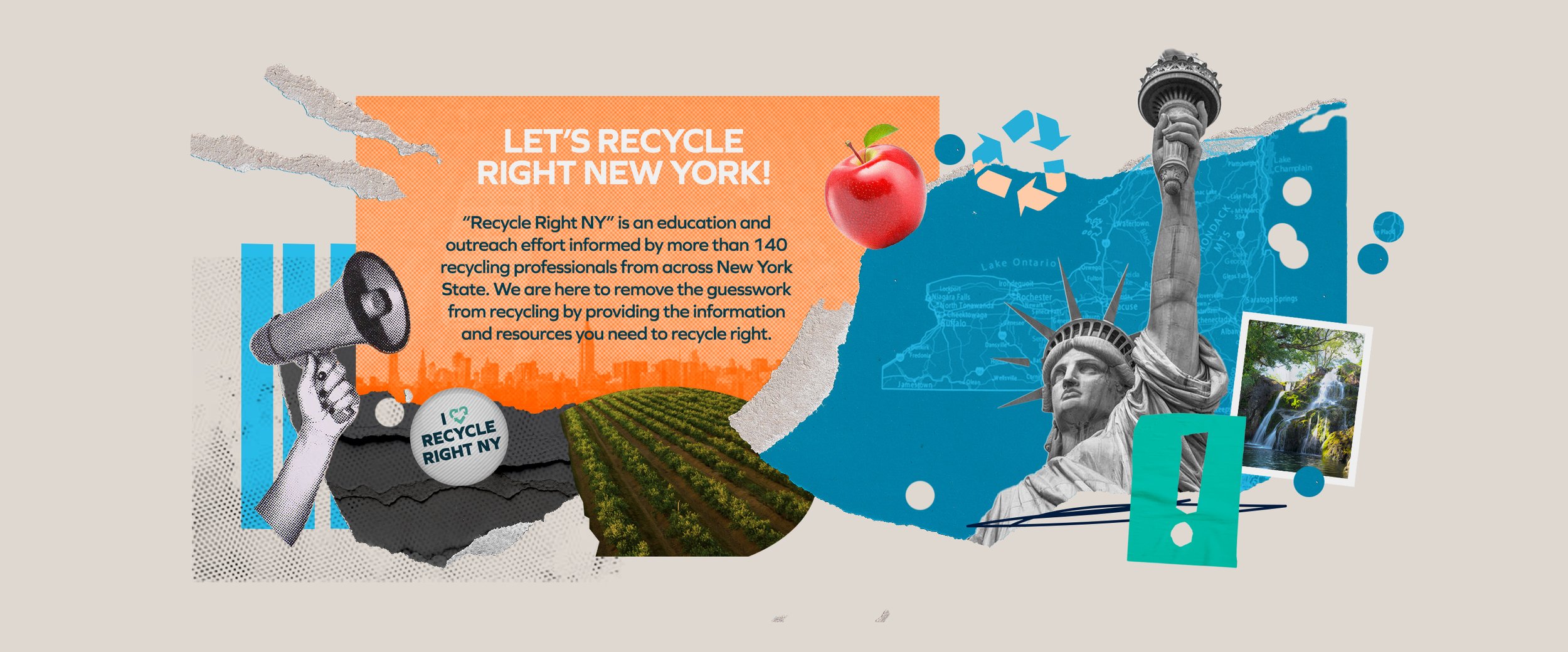
Here's the latest
〰️
Here's the latest 〰️
This article will shed light on key pitfalls and provide practical tips for more effective and environmentally-friendly recycling practices. Stay informed and make a positive impact on the planet by ensuring your recycling efforts are on the right track.
Are you confident that you’re recycling right?

WHAT DO I DO WITH THIS?
Confused about an item? We will help you sort it out! Become a recycling expert by exploring our statewide “Recyclopedia” tool. It’s like an encyclopedia, but for common household materials. Learn what to do with more than 300 items like broken light bulbs, plastic utensils, pizza boxes, old electronics, used clothing, and so much more.

KNOW BEFORE YOU THROW
What and how you recycle depends on where you live in New York State. Counties, cities, towns, and villages across the state have different recycling guidelines, so an item accepted by your local recycling service may not be accepted in other areas of New York. Be sure to know before you throw by mastering the ins and outs of the recycling guidelines provided by your community or recycling hauler.

LET’S BUST SOME COMMON RECYCLING MYTHS!
TRUTH
Not necessarily. There are many items that have the recycling symbol on them – such as some packaging and single-use plastics – that may not be accepted by your local recycling service. Check your local guidelines to learn what specific items your local recycling service does and does not accept.
WHY
The widely recognizable recycling symbol, consisting of three chasing arrows, is not regulated or trademarked. Manufacturers decide whether or not to include the symbol on their products and packaging, but if your local recycling service cannot sort or sell an item, then it may not be accepted for recycling.
TRUTH
Not always. Many common household items such as straws, food pouches, plastic wrap, and balloons are not accepted for recycling. Before placing any plastic items in your recycling bin, check your local guidelines to make sure they are accepted by your recycling service.
WHY
Not all plastics are the same. There are many different types of plastics which need to be separated from one another in order to be recycled. If your local recycling service cannot easily sort a plastic item because of its size or shape, or if there are no buyers for the type of plastic that an item is made from, then it may not be accepted for recycling.
TRUTH
Not always. Plastic bags, plastic utensils, foam containers and packaging, and other household items cannot easily be sorted from other materials and can cause major problems for recycling facilities. Be sure to check your local recycling guidelines so that you know before you throw!
WHY
Putting ropes and chains, batteries, medical sharps, and other unaccepted items in with your recyclables can damage a recycling facility’s sorting equipment, decrease the value of other materials, and injure employees who work there. Facilities that sort recyclables are designed to handle only certain types of items based on the size, shape, and material makeup of those items. The specific recyclables that are accepted largely depends on a facility’s sortation equipment and whether or not there is a buyer for the material.
TRUTH
If done right, accepted items most likely will get recycled. Lots of products are made from the used items that are collected by recycling systems, many right here in New York. To complete the loop and help support your local recycling industry, look for products with the words “made from post-consumer recycled content”.
WHY
Recovering used paper, metal, glass, plastic, and other valuable materials to create new products has many advantages over extracting raw materials. Recycling helps to create jobs, protect public health, reduce pollution, save energy, conserve natural resources, and more by keeping materials in productive use instead of sending them to a landfill or incinerator where they are unable to be used again.









